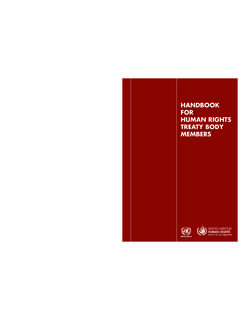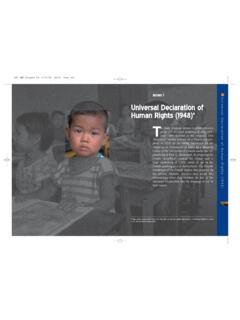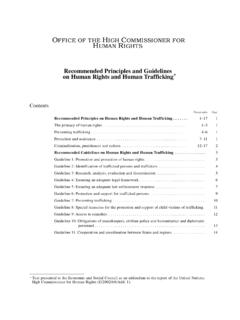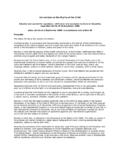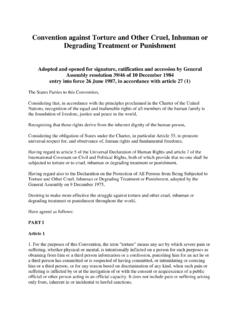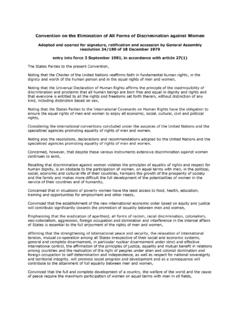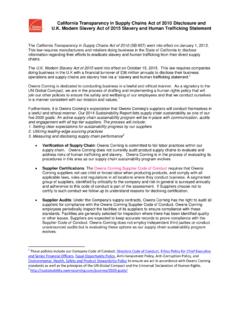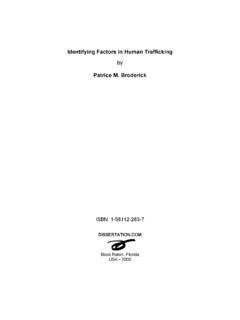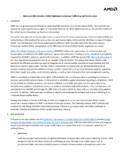Transcription of Human Rights and Human Trafficking - OHCHR
1 Human Rights and Human Trafficking Fact Sheet No. 36 Human Rights and Human Trafficking Fact Sheet No. 36. UNITED NATIONS. New York and Geneva, 2014. NOTE. The designations employed and the presentation of the material in this pub- lication do not imply the expression of any opinion whatsoever on the part of the Secretariat of the United Nations concerning the legal status of any country, territory, city or area, or of its authorities, or concerning the delimita- tion of its frontiers or boundaries. *. **. Symbols of United Nations documents are composed of capital letters com- bined with figures.
2 Mention of such a figure indicates a reference to a United Nations document. II. CONTENTS. Page ACRONYMS AND ABBREVIATIONS .. V. INTRODUCTION .. 1. I. WHAT IS Human Trafficking ? .. 2. A. The international definition of Trafficking .. 2. B. Important features of the definition .. 3. II. WHAT IS THE RELATIONSHIP BETWEEN Human Rights . AND Human Trafficking ?.. 4. A. Trafficking as a violation of Human Rights .. 5. B. The Human Rights of trafficked 6. C. The importance of a Human Rights -based approach to Trafficking .. 7. III. WHAT ARE THE OBLIGATIONS OF STATES WITH RESPECT. TO Trafficking ?
3 9. A. Sources of obligations .. 9. B. Understanding State responsibility to address Trafficking ..11. C. The obligation to identify, protect and support victims of Trafficking ..12. D. Obligations related to the return of trafficked persons ..23. E. Remedies for Trafficking ..26. F. Obligations of an effective criminal justice response ..34. G. Preventing Trafficking ..38. H. Ensuring responses do not violate established Rights ..49. IV. IMPLEMENTATION, MONITORING AND A. Mechanisms attached to treaties on Trafficking ..53. B. The international Human Rights III. C. The Global Plan of Action to Combat Trafficking in Persons and the United Nations Trust Fund for Victims of Trafficking .
4 58. D. International and regional courts and tribunals ..58. E. National monitoring and IV. ACRONYMS AND ABBREVIATIONS. ASEAN Association of Southeast Asian Nations EU European Union ILO International Labour Organization OHCHR Office of the United Nations High Commissioner for Human Rights UNHCR Office of the United Nations High Commissioner for Refugees UNICEF United Nations Children's Fund UNODC United Nations Office on Drugs and Crime V. Violations of Human Rights are both a cause and a consequence of Trafficking in persons. Accordingly, it is essential to place the protection of all Human Rights at the centre of any measures taken to prevent and end Trafficking .
5 Anti- Trafficking measures should not adversely affect the Human Rights and dignity of persons and, in particular, the Rights of those who have been trafficked, migrants, internally displaced persons, refugees and asylum seekers. Recommended Principles on Human Rights and Human Trafficking VI. INTRODUCTION. Human Trafficking is generally understood to refer to the process through which individuals are placed or maintained in an exploitative situation for economic gain. Trafficking can occur within a country or may involve move- ment across borders. Women, men and children are trafficked for a range of purposes, including forced and exploitative labour in factories, farms and private households, sexual exploitation, and forced marriage.
6 Trafficking af- fects all regions and most countries of the world. While it is difficult to secure reliable information about patterns and numbers, our understanding about why Trafficking happens has improved. Inequalities within and between countries, increasingly restrictive immigration policies and growing demand for cheap, disempowered labour are just some of the un- derlying causes that have been identified. The many factors that increase indi- vidual vulnerability to Trafficking include poverty, violence and discrimination. The exploitation of individuals for profit has a long history and international efforts to address it can be traced back at least a century, well before the birth of the modern Human Rights system.
7 However, it is only over the past decade that traf- ficking has become a major concern. During that same period, a comprehensive legal framework has developed around the issue. These changes confirm that a fundamental shift has taken place in how the international community thinks about Human exploitation. It also confirms a change in expectations of what Governments and others should be doing to deal with Trafficking and to prevent it. Hence, the victim-centred approach is also gathering increased support from the international community. Human Rights form a central plank of the new un- derstanding and there is now widespread acceptance of the need for a Human Rights -based approach to Trafficking .
8 As explained further in this Fact Sheet, such an approach requires understanding of the ways in which Human Rights violations arise throughout the Trafficking cycle and of the ways in which States' obligations under international Human Rights law are engaged. It seeks to both identify and redress the discriminatory practices and unequal distribution of power that under- lie Trafficking , that maintain impunity for traffickers and that deny justice to victims. This Fact Sheet seeks to provide a brief but comprehensive overview of Human Rights and Human Trafficking . In exploring the applicable legal and policy framework, it draws on two major outputs of the Office of the United Nations High Commissioner for Human Rights ( OHCHR ): the 2002 Recom- mended Principles and Guidelines on Human Rights and Human Trafficking and its extensive 1.
9 Recommended Principles and Guidelines on Human Rights and Human Trafficking : Commentary (United Nations publication, Sales No. ). The Recommended Principles and Guidelines themselves have been issued separately (HR/PUB/02/3) and are available from 1. The Fact sheet is divided into four chapters. Chapter I explores the definition of Trafficking and its core elements. It also examines some of the myths and mis- understandings around the definition. Chapter II considers the relationship between Human Rights and Human Trafficking . It identifies those Human Rights that are commonly affected by Trafficking and considers the situation of special groups with reference to additional or different Rights to which they may be entitled.
10 This chapter also summarizes what is involved in taking a Human Rights -based approach to Trafficking . Chapter III turns to the obligations of States. It identifies the sources of these obligations and explains how a State may be legally responsible for the harm caused by Trafficking , even if it did not directly cause it. Specific obligations of States are discussed with reference to victim protection and support; repatriation and remedies; criminal justice responses; and prevention. Chapter IV considers how these obligations can be implemented and monitored, with a view to ensuring that States and others are held accountable for their acts and omissions.

